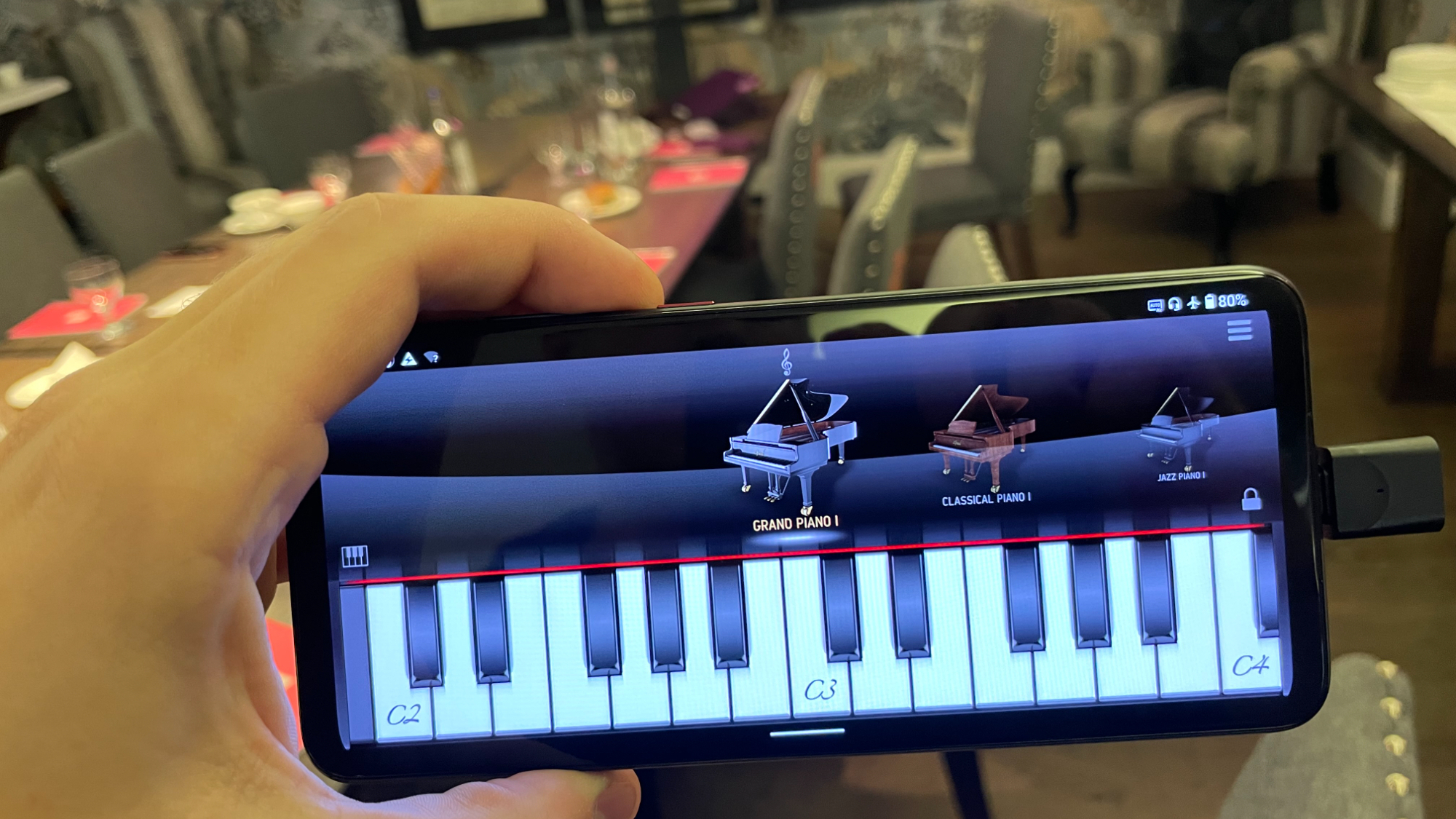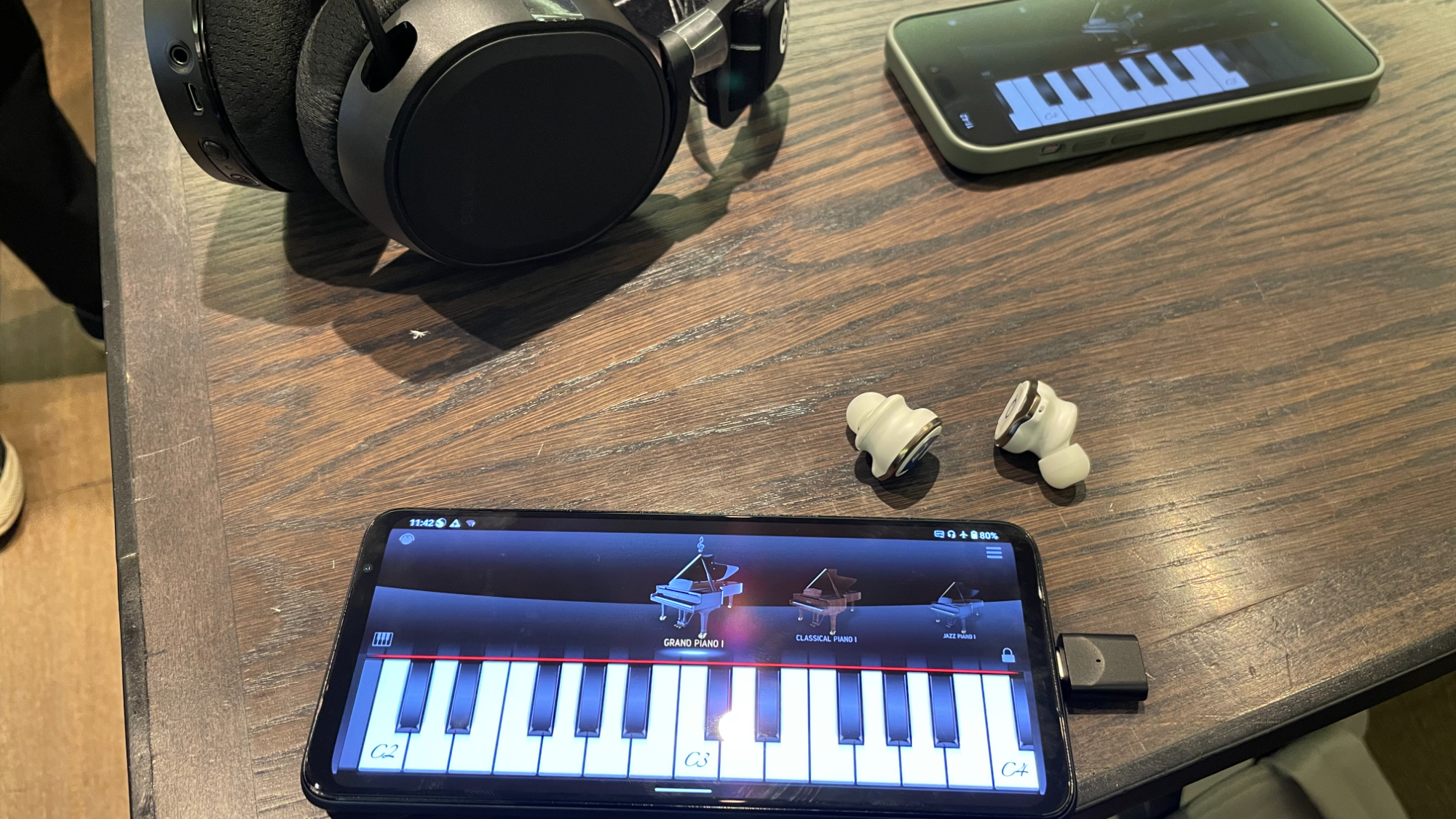I tried Qualcomm's new Bluetooth technology and it could be a game-changer for gaming headsets
Qualcomm’s new Snapdragon technology might spell the end for wired gaming headsets

Gaming is a huge industry. As gamers love to remind us, it outsells practically all other forms of popular media, trouncing its competition to take 42 per cent of all entertainment revenue in 2022 according to the ERA. It’s no surprise then that big tech companies are doing everything they can to serve the most dominant consumer market on the block right now – a market that is young, devoted and very demanding.
One of the things that gamers, especially at the competitive end, demand, is stable, responsive audio, something that the audio industry is now working hard to provide. Most streamers and competitive gamers favour a wired headset due to decreased latency levels (the time between seeing an action on screen and hearing it in your ears), meaning that Bluetooth sets are usually consigned to the more casual end of the market. Unsurprisingly, most Bluetooth connections can’t match the rapid response rates facilitated by good old-fashioned wires.
That is something that tech giant Qualcomm is seeking to change. I attended the company’s tech demo in London to experience first-hand exactly how Qualcomm is looking to bring massively decreased latency rates to the world of Bluetooth gaming. It’s a dream that is being facilitated by the use of Qualcomm’s S3 Gen 2 platform via a plug-in dongle that dramatically reduces latency rates from screen to ear.
Most Bluetooth sets suffer from noticeable lag, ranging from a short hesitation to a really conspicuous delay in sound delivery. In a high-stakes competitive environment, these shortcomings can make all the difference. With the dongle, Qualcomm promises to reduce latency rates to around 20ms, a level so low you will barely register a delay between the action on screen and the time when you actually hear it.

Such speed will inevitably vary depending on what you are doing, but Qualcomm’s demonstration really did seem to back up its remarkably high-speed claims. The demo itself was far from the high-tech, Blade Runner-like glamour you might expect from an industry-leading tech company; it featured nothing but a laptop and a few phones. But while the demo may not have been the most aesthetically impressive, the effect produced certainly was striking.
The demo backed up what Qualcomm’s numbers appear to suggest. A laptop with a dongle attached and some rather capable Qualcomm headphones (not for sale, sadly) connected via Bluetooth invitingly teased a training session on the wildly popular online shooter PUBG: Battlegrounds. Firing a shot from the protagonist’s firearm elicited an immediate audio response – the time between seeing the action on-screen and hearing the gunshot was, to all intents and purposes, imperceptible. It’s a really neat trick, although to get the proper experience you will need the dongle plugged into your gaming source, be it a laptop, console or even a mobile device, to get those latency rates as low as possible. You also, presumably, need everything else in the ensemble working at maximum capacity, so make sure your internet connection isn’t bringing in its own delay to the party.
Speaking of mobile devices, the demonstration also saw the dongle hooked up to a smartphone which sported a basic mobile piano app. My attempts to play Beethoven’s Pathétique with one finger proved a bridge too far, but the immediacy from touch-to-sound was almost akin to playing an actual piano – albeit far, far smaller – such was the decrease in perceptible lag.
The latest hi-fi, home cinema and tech news, reviews, buying advice and deals, direct to your inbox.

If the tech works, the real question becomes one of audience. There is clearly a massive demand in the gaming world for decreased sound latency, it’s simply a question of whether a large number of wired users have a real desire to ditch the cables and find the freedom provided by a wireless connection. Qualcomm assures us that there is a ready market for low latency via Bluetooth cans, especially for young gamers not used to the burden of the cable experience; and with gaming now becoming hugely popular on the mobile market, too, there could be huge demand for such a facility.
It’s also tech that could be implemented alongside some of Qualcomm’s other more recent innovations for a truly immersive gaming experience. We checked out the company’s head-tracking spatial audio last year, and while there are teething issues, sound that adapts and follows you as you play a game, be it cars racing past your head on a track or guards scouting your position, could make for a seriously immersive experience. Add low-latency Bluetooth into the mix and gaming audio really could go to the next level.
MORE:
Forget hi-res audio, Auracast is the future Bluetooth feature I'm most excited about
Dynamic spatial audio is coming to Android phones for more immersive gaming and movie watching
aptX Lossless: what is the breakthrough Bluetooth codec? How can you get it?

Harry McKerrell is a senior staff writer at What Hi-Fi?. During his time at the publication, he has written countless news stories alongside features, advice and reviews of products ranging from floorstanding speakers and music streamers to over-ear headphones, wireless earbuds and portable DACs. He has covered launches from hi-fi and consumer tech brands, and major industry events including IFA, High End Munich and, of course, the Bristol Hi-Fi Show. When not at work he can be found playing hockey, practising the piano or trying to pet strangers' dogs.
